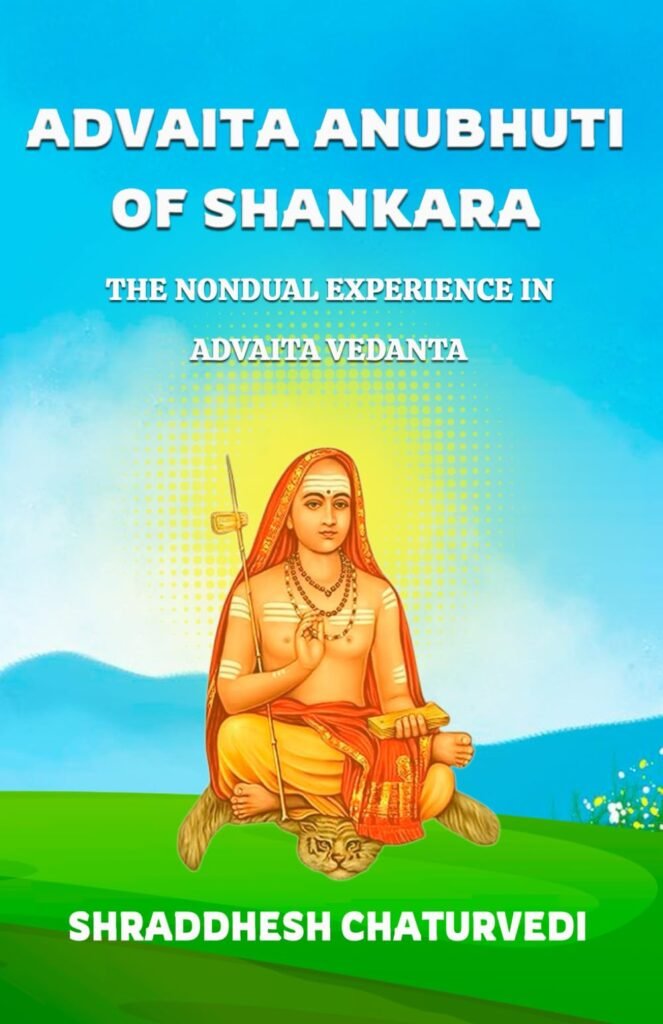Advaita Anubhuti Book
Advaita Anubhuti

Advaita Anubhuti (also spelled Advaitānubhūti) means “The Experience of Non-Duality”. It is a philosophical and spiritual treatise that deals with the direct realization (anubhuti) of the truth of Advaita Vedanta — the non-dualistic school of Hindu philosophy.
The text is traditionally attributed to Swami Vidyaranya, a 14th-century saint and scholar, who is also known for his major works like the Panchadashi and his role in the founding of the Vijayanagara Empire. In Advaita Anubhuti, Vidyaranya presents the essence of Advaita philosophy not merely as a theory or intellectual concept, but as a direct inner experience of the Self.
Meaning and Purpose
The word Advaita means “non-duality” — the idea that there is no real distinction between the individual self (Atman) and the ultimate reality (Brahman). According to Advaita Vedanta, the multiplicity we see in the world is an illusion (maya), and the only truth is Brahman, the infinite, eternal, and unchanging consciousness.
Anubhuti means direct realization or experience — not in the sense of sensory experience, but in the sense of self-revealing knowledge. So, Advaita Anubhuti is a text focused on the practical realization of the non-dual truth.
Core Themes of Advaita Anubhuti
- The Self as Pure Consciousness:
The text affirms that the Self (Atman) is not the body, mind, or ego, but pure consciousness, which is beyond time, space, and causality. This consciousness is self-luminous, meaning it reveals itself without depending on anything else. - Illusory Nature of the World:
The world, with its distinctions and diversity, is considered a projection of maya (illusion). Just as a rope can appear as a snake in dim light, the Self appears as the world due to ignorance. Upon right knowledge, this illusion disappears. - Ignorance and Knowledge:
The root cause of bondage is avidya (ignorance), which makes one identify with the body and mind. Liberation comes through self-knowledge (atma-jnana) — knowing that one’s true nature is Brahman. This knowledge destroys ignorance just as light removes darkness. - Liberation (Moksha):
Liberation is not something to be achieved in time. It is the ever-present reality, obscured only by ignorance. The moment ignorance is removed, one realizes that one has always been free. - Practice and Realization:
The text outlines methods such as shravanam (listening to the teachings), mananam (reflecting), and nididhyasanam (deep meditation) to internalize the truth of non-duality. However, it ultimately stresses that realization is not an intellectual process, but a direct inner awakening.





















































